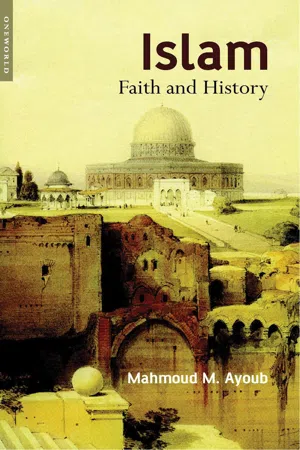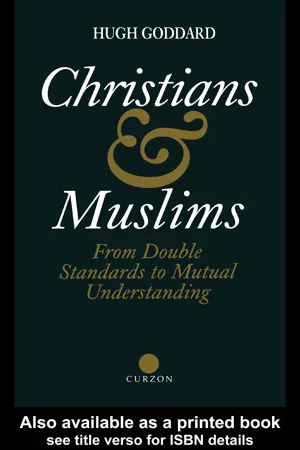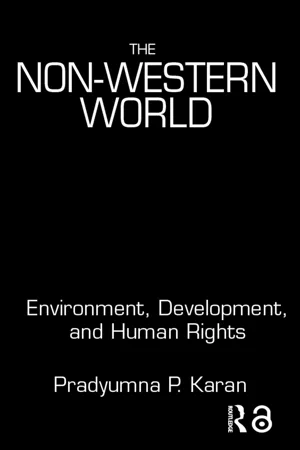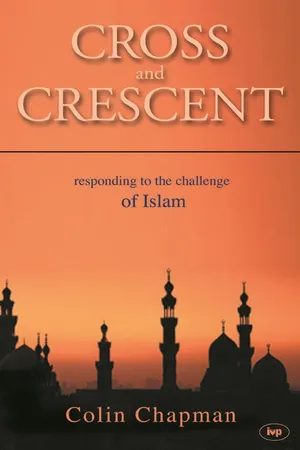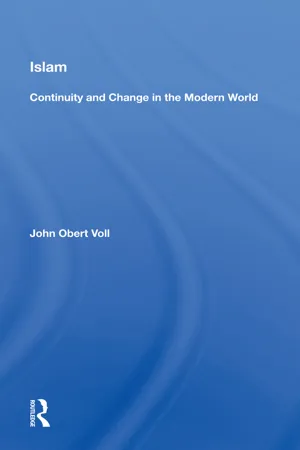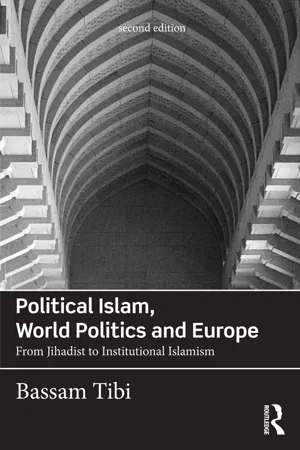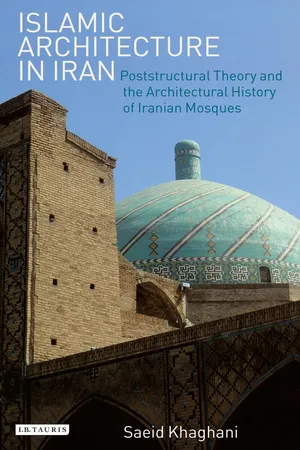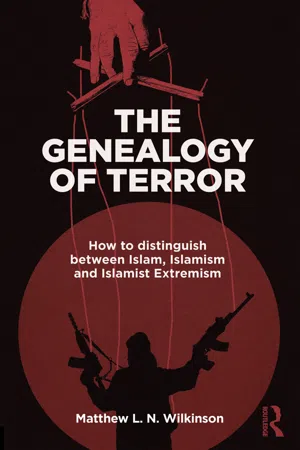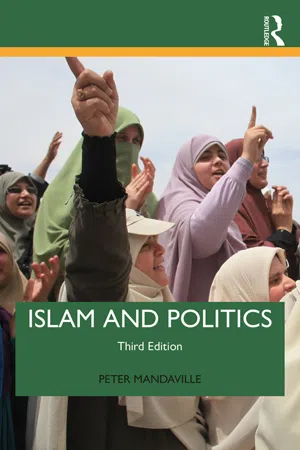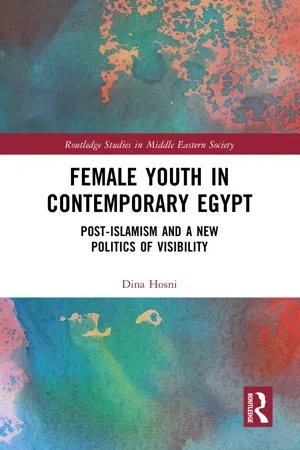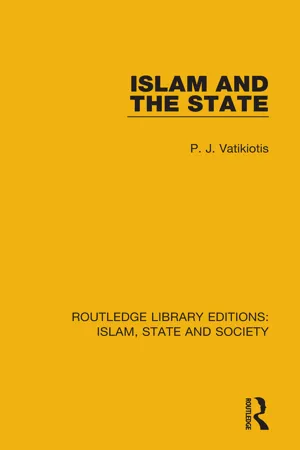History
Spread of Islam
The spread of Islam refers to the expansion of the Islamic faith from its origins in the Arabian Peninsula to other parts of the world. This expansion occurred through a combination of military conquest, trade, and missionary activities. The spread of Islam had a profound impact on the cultures, societies, and political landscapes of the regions it reached, shaping the course of history.
Written by Perlego with AI-assistance
Related key terms
Related key terms
1 of 4
Related key terms
1 of 3
12 Key excerpts on "Spread of Islam"
- eBook - ePub
Islam
Faith and History
- Mahmoud M. Ayoub(Author)
- 2013(Publication Date)
- Oneworld Publications(Publisher)
6
The Spread of Islam
Like Christianity, Islam is a universalist and therefore a missionary religion. Muslims believe that their message of faith in the one God, his angels, and all his prophets and scriptures, and in the principles of divine reward and retribution on the day of judgment is intended for all of humankind. Furthermore, they believe that Islam, as a social, political, and economic system based on these principles, can be fully implemented only in a sovereign community that transcends the limitations of cultural and linguistic barriers and geographic borders. The vast domain of this community has been legally designated asdā r al-islā m, meaning the “house” or “abode of Islam.” The rest of the world is primarily divided into either the sphere of peace or truce (ṣ ulḥ), or the sphere of war (ḥ arb), depending on the relationship of the Muslims to any particular area of the world. Yet the whole world is regarded by Muslims as potentially the house of Islam.Islam grew and spread not simply as a collection of beliefs and rituals, but as a political and military power and a religious legal system. To be sure, these orbits have often complemented and completed one another, but they have often also acted separately and even in conflict with one another. In general, it may be observed that most of what Islam achieved through conquest and military might was soon lost. What it achieved through the preaching and living examples of teachers, pious Sufi mystics, and traders has remained a vital part of the Muslim ummah , as will be amply demonstrated below.ISLAM IN NORTH AFRICA AND SPAIN
After the consolidation of what came to be the heartland of Islam – Syria, Egypt, and Persia – Muslim forces conquered North Africa in the second half of the seventh century. Before Islam, North Africa was first an important Roman province, and then an equally important home of Latin Christianity. With its indigenous Berber and Phoenician, Roman, and Byzantine populations, North Africa was an area of rich cultural and religious diversity. It has always maintained a distinct religious and cultural identity, reflecting its ancient heritage. - eBook - ePub
Christians and Muslims
From Double Standards to Mutual Understanding
- Hugh Goddard(Author)
- 2003(Publication Date)
- Routledge(Publisher)
The first, lasting approximately a century, saw a dramatic expansion of an Islamic Empire, which even if it did not enforce conversion to Islam nevertheless provided the environment in which over the centuries the majority of the population has converted to Islam. This area is essentially the Arab world of to-day plus Iran. The second phase of the Spread of Islam was through peaceful means and took place beyond the frontiers of the Islamic Empire, particularly in Central Asia and in Africa. The third phase was again an expansion in the wake of conquest, this time at the hands of Turkish tribes. Asia Minor, the Balkans, and most of the Indian Sub-Continent came under Islamic rule in this phase. The fourth phase, which still continues, is more like the second phase in its manner. Islam has spread peacefully during it, and the most important area in which it has done so is South- East Asia. But as this phase continues, so Islam has become a truly universal religious faith, in reality as well as in theory, and this process therefore seems likely to continue into the foreseeable future. The spread of Christianity In the history of the spread of Christianity as in the Spread of Islam, a certain rhythm may be detected, with different phases being evident, and different methods of expansion being used in different periods. Phase I—the first three centuries As we have already seen, Jesus lived and worked in Palestine, which happened to be a province of one of the great world states of the time, the Roman Empire. When his disciples came to write down their records of Jesus’ life and meaning they did so in the lingua franca of the Eastern part of that empire, Greek, and they did so because it was not long before the focus of the Christian community’s attention shifted from the preoccupations of the Jewish community in Palestine to the wider religious preoccupations of the Roman world - eBook - ePub
The Non-Western World
Environment, Development and Human Rights
- Pradyumna P. Karan(Author)
- 2004(Publication Date)
- Routledge(Publisher)
Islam emphasizes action in the struggle to implement belief, to defend religion, and to spread Islamic society throughout the world. The early Islamic community used the model of jihad for the spread and defense of religion. When Mohammed and his group experienced persecution in Mecca, they emigrated to Medina to regroup and strengthen. Then they began jihad to spread Islam and promote a worldwide Islamic community. Under the leadership of Mohammed and his successors, the Islamic community spread rapidly through conquest and conversion, creating a vast empire stretching from North Africa to India. From the seventh to eighteenth century Islam became a global power through the existence of empires and sultanates. The breakup and fragmentation of the Muslim empires by European colonialism reduced the significance of the Islamic worldwide community. During the last half-century the spread of international communication has reinforced the resurgence of Islam, and has produced a wave of radical Islamic movements from Algeria (Islamic Salvation Front, Salafist Group for Call and Combat), Egypt (Islamic Jihad, Muslim Brotherhood, and Jmaat-i-Islami), Israel/Palestine (Hamas, Al Aqsa Martyrs Brigades), Saudi Arabia (the Wahhabi-based pan-Islamic vision), Sudan, Iran, Pakistan (Jamiyat-i-Ulama-i-Islam, Sipah-Sahaba Pakistan, Laskar-e-Jhangvi), Tajiksitan (Islamic Renaissance Party), Uzbekistan (Islamic Movement of Uzbekistan), Afghanistan, Malaysia, Indonesia (Jemaah Islamiyah, Laskar Jihad), and the Philippines (Moro Islamic Front). Figure 6–3. The boundary pillar marking the Afghanistan–British India (now Pakistan) border, called the Durand Line, was drawn by Britain in 1893. The boundary runs through the frontier tribal areas of Pakistan and is the stronghold of radical Islamic groups such as the Taliban and al-Qaeda terrorist network that is providing shelter to Osama bin Laden. (Photo: P.P - eBook - ePub
Cross and Crescent
Responding To The Challenges Of Islam
- Colin Chapman(Author)
- 2012(Publication Date)
- IVP(Publisher)
10 When Islam gained power, however, traditional customs and structures were banned and destroyed.In many places in Asia, Islam was spread largely by traders, teachers and holy men, but also by local wars. According to Fazlur Rahman, ‘Those people who spread Islam were mainly Sufis who attracted non-Muslim masses towards Islam by their spiritual activity and their broad humanitarian services to all sorts of people whether Muslim or non-Muslim.’11 Muslims were considered superior because they were literate, were engaged in healing, and were more wealthy.The slave trade, which began in the early period of the Spread of Islam and was directed from the Middle East and Arabia, played a significant role in the extension of Islamic influence and power in both East Africa and West Africa. It took large numbers of Africans into the Middle East who eventually converted to Islam. Similarly, within Africa itself the slave trade and enslavement escalated during the Jihad period, resulting in large-scale enslavement by Muslim compatriots of Africans who practised traditional religions. The social disruptions engendered by the slave raiding coupled with the fact that slaves always adopted the religion and way of life of their masters contributed to the conversion of a significant proportion of Africans to Islam.12At the beginning of the Abbasid dynasty in Baghdad in 750 the Islamic world was still united, and its empire was still highly successful and powerful. Two caliphs in particular, Harun al-Rashid (786–809) and al-Ma’mun (813–33), are particularly remembered for the splendour of their courts and for scientific and cultural achievements during their reigns. This Golden Age lasted until the end of the tenth century. During this period, however, the political unity of the empire was declining, as one province after another gained its independence. From now on the caliph only enjoyed an honorary position of leadership over the Muslim world. - West of the Ottoman Empire, Islam was expanding vigorously into West and Central Africa. By the beginning of the sixteenth century, Islam had become the religion of the rulers of a series of large states, including the Songhai Empire. This experience of the Islamic community needs to be remembered, but "the extraordinary scope and force of this Islamic expansion. . . often escapes attention. Yet an intelligent and informed observer of the fifteenth century could hardly have avoided the conclusion that Islam, rather than the remote and still comparatively crude society of the European Far West, was destined to dominate the world in the following centuries." 10 The problem of coping with the tremendous diversity of peoples and cultures that had been brought into the world of Islam helped set the tone for this era. Each region developed its own particular methods for dealing with the sociocultural pluralism, although the overall sense of the Islamic community provided a common conceptual framework. Two alternative methods were a tolerant openness and a more strict exclusivism. During the sixteenth and seventeenth centuries, both methods were utilized. There was, however, a gradual shift of emphasis. The expansion and early consolidation of the great states were associated with a more tolerant acceptance of diversity and, in some cases, even a formal institutionalization of that diversity. By the end of the seventeenth century, there was a reaction to the compromises that were involved, and the dominant mode began to shift in the direction of greater exclusivism. In concrete terms, this shift can be seen in the development of the diverse imperial systems. Following the Ottoman conquest of Constantinople in 1453, Sultan Mehmet II gave special recognition to the patriarch of the Greek Orthodox Church, giving him civil as well as religious authority over the Orthodox Christian subjects of the empire
- eBook - ePub
Political Islam, World Politics and Europe
From Jihadist to Institutional Islamism
- Bassam Tibi(Author)
- 2014(Publication Date)
- Routledge(Publisher)
Part I of this book.The study of Islam as a civilization in a scholarly but not in an Islamic apologetic or an Orientalist manner (and, to be sure, also not in the Saidian way of Orientalism in reverse) helped me to understand the history of Islamic civilization and its current dilemmas. Islam succeeded in ruling most parts of the world in its imperial history after the Islamic conquests. The latter were conducted as jihad in the form of qital /physical fighting and contributed to an Islamization of vast parts of Asia, Africa and parts of Europe. Between the seventh and the seventeenth centuries Muslims formed the leading civilization.As a student of history in Europe and the USA, I learned in my academic studies that the decline of the Islamic civilization was related to both an emerging inner weakness and the rise of the technologically superior West within the framework of “the military revolution,” as Geoffrey Parker puts it. In contrast to what I had learned in Damascus, I was exposed to the telling story of the consequences of new industrial power translating its capabilities into warfare, characterized by the “industrialization of war,” as Anthony Giddens argues. This new power underpinned the European expansion. Through its technological advantage, the West was in a position first to contain the jihad expansion, then to overtake the place of the earlier superior Islamic civilization, and later even to conquer the abode of Islam itself while subjecting it to European colonial rule. This development caused deep wounds, to the extent that Muslims in their collective memory relate colonization and crusades to one process of humiliation of Islam by the Christians of Europe. When colonial rule ended, decolonization never meant more than an inclusion into the system of sovereign states. Europeans had successfully managed “to impose [this system; B.T.] on the entire world,” to put the story in the phrasing of Charles Tilly. - eBook - ePub
Islamic Architecture in Iran
Poststructural Theory and the Architectural History of Iranian Mosques
- Saeid Khaghani(Author)
- 2012(Publication Date)
- I.B. Tauris(Publisher)
168 Islam lost or did not gain the ability to affirmatively debate new conditions. For those who saw Islam as a spatially definable entity, this new situation created two groups, first those who saw no potential for conducting issues of the modern world within traditional Islam, and second, those who made Islam an ossified enclosure both to preserve it and also to seek refuge within it. Islam ceased to be a culture for both groups. The primary problem for each group, regardless of their proposed solutions, was their initial presumption that Islam constituted a homogenous and enclosed space.Clearly, differences existed in historical Islam, but the source of difficulty now was to craft new forms of narration and articulate them in new contexts. A distinctive characteristic of Islam has been to cast un-institutionalised differences into single spatio-temporal entities as paradoxical rather than homogenous beings. The problem of the views mentioned above was to come to a conceptual consciousness of the consequences of transferring these differences into the spatially institutionalised space of modern narrations.Transparency for being able to regulate, spatial conservation to maintain durability and pluralism between different narrations were the inevitable outcome of questioning the differences which were constructing the components of traditional Islam. However, more than the inner spaces of such narrations, which focus on the construction of relationships through a theory between concepts and phenomena, it was the space between these narrations which needed the conceptual attention. The Islam of power institutions, Islam as the law-maker, the Islam of Sufism, and Islam as public piety were existing differences which, because of various unifying factors, such as the codes of Sunnah, remained spatially undefined. While such differences may be acknowledged, they provide one of the main difficulties in interpreting Islamic attribution, which resists articulation, conceptually or politically, and can, at best, represent them as variations of the same core without essential differentiations. - eBook - ePub
The Genealogy of Terror
How to distinguish between Islam, Islamism and Islamist Extremism
- Matthew L. N. Wilkinson(Author)
- 2018(Publication Date)
- Routledge(Publisher)
2The roots of Islam, Islamism and Islamist Extremism The historical fault lines of IslamIntroduction: Islam is shaped by the presence and absence of Muhammad
The world of contemporary Islam and Muslims and their Islamist derivatives is characterized by what critical realist philosophers have called ‘the presence of past’.1 Islam, Islamism and Islamist Extremism are all deeply permeated by the spiritual, intellectual and political residue of events that happened centuries ago and fault lines that opened up in the earliest generations of Islam. These fault lines still reverberate, often toxically, down the centuries. Therefore, to understand the roots of Islam, Islamism and Islamist Extremism, we start with the history of early Islam.Original Islam revolved around the Prophet Muhammad
Original Islam (610–632 CE ) was revealed by means of the Book of Islam, Al-Qur’an (which literally means ‘the Recitation’), which Muslims believe is the Word of God brought from His Presence by the Archangel Gabriel and delivered to humanity on the tongue of the Prophet Muhammad. The message of the Qur’an, which will be explored in Chapters 3 , 4 and 5 , was exemplified by the Customary Behavior (as-Sunna) of the Prophet Muhammad (570–632 CE ), first in his hometown of Mecca in the Arabian Peninsula (610–622 CE ) and then, after his migration (hijra ) with 100 or so of his Companions from persecution in Mecca, in Medina (622–632 CE ).2Original Islam was characterized by, and pivoted around, the presence of the Prophet Muhammad himself in the midst of his Companions (Sahaba - eBook - ePub
Defining Islam
A Reader
- Andrew Rippin(Author)
- 2016(Publication Date)
- Routledge(Publisher)
2 It also disregards the fact that most Muslims quite consciously hold that their religion possesses central, normative tenets and that these tenets are essential to an understanding of Islamic belief and practice.The main challenge for the study of Islam in local contexts is to describe and analyze how the universalistic principles of Islam have been realized in various social and historical contexts without representing Islam as a seamless essence on the one hand or as a plastic congeries of beliefs and practices on the other. This essay seeks to assess major recent trends in the study of Islam in local contexts and suggests new directions for further research on the basis of recent scholarship.Beginnings
The notion of local as recently developed is considerably more complex than earlier sharp distinctions between, for instance, the concept of “great” and “little” (or “folk”) traditions introduced by anthropologists and historians in the late 1940s as a means of better describing large-scale civilizations such as those of China, India, and Islam. As initially employed, this conceptual distinction was a useful way of indicating the possible relationships between religious traditions as known through the texts and exegeses of literati on the one hand and religious expressions and interpretations in village or folk contexts on the other. Unlike the earlier doctrine of “survivals,” which presumed that folk traditions were somehow vestiges of earlier civilizations and less permeable than “high culture” to change, the notion of great/little traditions made no gratuitous assumptions concerning the historical precedent of some civilizational elements over others. As the notion of great/little traditions first began to develop, it enabled scholars working primarily with texts and those working in “field” settings to see the complementarity of their interests and to reassess their working notions of text and context. Yet as ordinarily reported, these various forms of religious expression were often merely juxtaposed and were not used as a base for the analysis of their complex interrelationships. Some anthropologists and historians, for instance, derived notions of normative or “orthodox” Islam from the tenets of orientalist scholars and wrote of observed village practices or local documents as “deviant,” or accepted without question similar interpretations by Muslim scholars. The notion of “local” in such instances carried the misleading implication of something provincial, or an inferior and imperfect realization of “genuine” or “high” culture religious belief and practice, as opposed to popular and “vulgar” ones.3 - eBook - ePub
- Peter Mandaville(Author)
- 2020(Publication Date)
- Routledge(Publisher)
It is suggested that “classic” Islamism, understood as an ideological project seeking to capture state power, increasingly is forced to compete with Muslim political agendas above and below the state that seek, respectively, to establish transnational Islamic polities or to open up spaces for the inclusion of religion in public life and greater recognition of Muslim identity claims within the context of broadly secular societies. The idea that the net effect of these developments is moving us toward a condition that some analysts have termed “post-Islamism” is considered through a discussion of several contemporary Islamic movements that operate outside the formal political realm but whose activities nonetheless need to be seen as forms of Muslim politics. The book concludes with some reflections on how these disparate strategies and politics around political Islam will likely play out in the coming years. Islam in the world: some basic facts Before getting into substantive discussion, it will be helpful to orient the reader to the subject matter at hand: Muslims and the Muslim world. Comprising more than 1.6 billion people across almost every continent (see Map 1.1), Islam constitutes one of the great world religions today – and certainly the fastest growing. 1 Often thought of as a Middle Eastern phenomenon, it is worthwhile taking note of the fact that the four countries with the greatest number of Muslims are actually in Southeast Asia (Indonesia) and South Asia (Pakistan, Bangladesh, and India). The states of the former Soviet Union are home to large numbers of Muslims, and significant populations are to be found in West and East Africa. So it is important immediately to disabuse ourselves of the idea that the Middle East and the Muslim world – despite their common overlap in contemporary discourse – are coterminous. Today we also hear much about the idea of Islam and the West as two separate entities - eBook - ePub
Female Youth in Contemporary Egypt
Post-Islamism and a New Politics of Visibility
- Dina Hosni(Author)
- 2022(Publication Date)
- Routledge(Publisher)
Imara, 1986 ). The next sections will be devoted to exploring different dimensions of dualism; the universal and the local, traditionalism and modernity, the sacred and the secular.Islam between the Universal and the Local
As far back as seventh-century Arabia, Islam appeared inviting its initial public to supersede the ‘stagnant localisms’ of tribe and kinship which stood as a resisting power to the Qur’anic vision of community (Madsen & Strong, 2003 , pp. 138–140). Muslims are thus dually attracted toward doctrinal and practical universalism from one side, and toward the historical particularity of the Arabian revelation, which results in two complementary types of practice; namely, endeavors to identify the universal aspects of the ‘religious’ where they belong to one Umma and attempts to foster distinct local identities (Bowen, 1998 , p. 258; Gaffney, 1994 , p. 30). The modern Islamic world until the 1990s has witnessed the rise of the universalistic Muslim concepts reform movements which called upon Muslims to forsake local practices and to comply by the common texts of Islam; namely, the Qur'an, the Proper ḥadīth and the principle of Shari'a (Lapidus, 2002 , pp. 867–868). Local cultic practices have thus become growingly marginalized as cultures that are not authentically Islamic to be increasingly superseded by global Muslim identity premised on common beliefs, rituals, as well as, common practices. By virtue of education, travel and new media a shared world of ideas and tastes has been created (Hourani, 2002 , p. 339). The growing shrinkage of boundaries between the East and the West has also contributed to the rise of the universal orientation, such that Western values and lifestyles have been embraced by a significant population in the Muslim world, and Islamic spirituality and Sufism have deeply impacted Western spirituality (Lapidus, 1996 , 2002). The universalistic identity is further fortified by the mushrooming of organized transnational or global Muslim movements which include assorted groups as propaganda and publication organizations, da'wa - eBook - ePub
- P. J. Vatikiotis(Author)
- 2016(Publication Date)
- Routledge(Publisher)
And yet two epochal developments — one fairly early, the other later — led to the collapse initially of the Arab and subsequently of the more cosmopolitan Muslim civilization. The first one was the break-up of the Caliphate, the disintegration of the political unity of the Islamic dominion. This was due in part to the restlessness and upheavals of the non-Arab converts, the rise of heresies and other religio-political movements among them, and the transformation of the military system by the introduction of that institution so unique to Islam, slave armies and praetorian garrisons, which rendered the Caliphate an otherwise powerless spiritual office. They inaugurated the Sultanate, a secular institution, based strictly on power. The weakness of the Caliphate allowed the usurpation of power by provincial governors and other satraps who founded short or long-lived dynasties at will. The break-up of the political unity of Islam was a reality by the middle of the eighth century when Abdel Rahman set up an independent state in Spain. By the beginning of the tenth century, a third rival Caliphate, the Fatimid in North Africa and Egypt, added to the disintegration.Political events were not the only disrupters of the political unity of Islam. Religious, cultural and economic changes contributed to it too. Pre-Islamic religious influences in Iran led to theological dissension and revolutionary messianism. A revival of Persian local or parochial sentiment expressed itself in a proliferation of Manichean and millenarian sects. In the heart of Islam the battle raged for a time between those who were attracted by Greek rational philosophy on one side and, on the other, those insisting upon the pre-eminence of the revealed word of God as the only explanation of human and natural phenomena.Despite all these challenges and political disruption, the Muslim world enjoyed, until the eleventh century, economic and other prosperity. The possession of a common language outweighed the loss of political unity. After that, however, the Islamic realm
Index pages curate the most relevant extracts from our library of academic textbooks. They’ve been created using an in-house natural language model (NLM), each adding context and meaning to key research topics.
Explore more topic indexes
Explore more topic indexes
1 of 6
Explore more topic indexes
1 of 4
